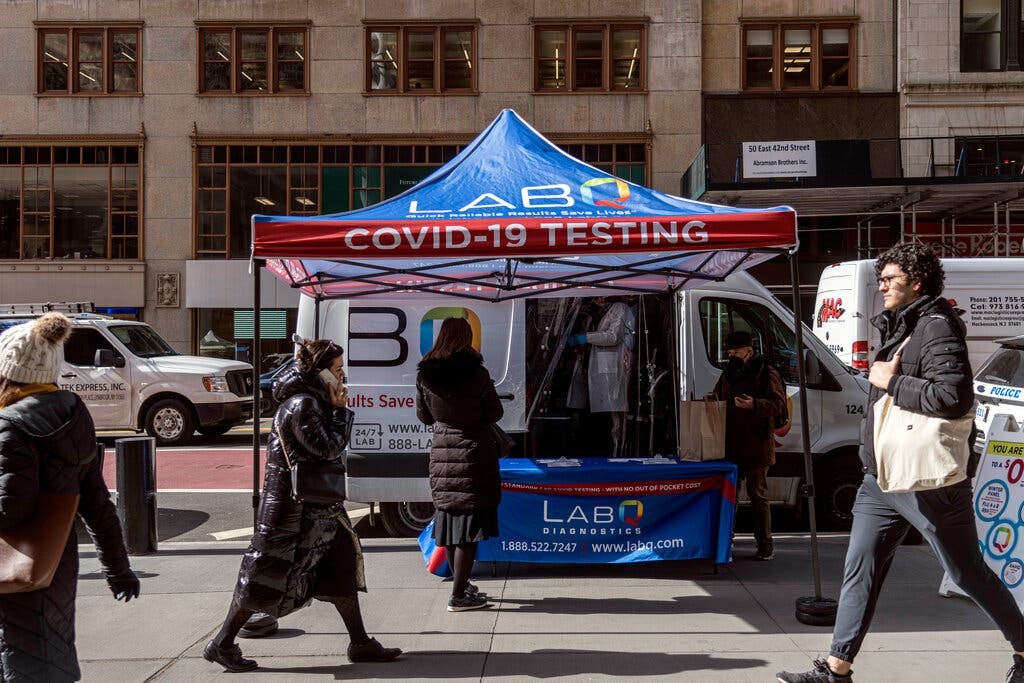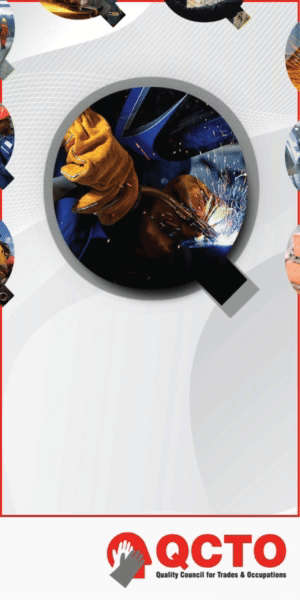DRIVEN by an Omicron subvariant, Covid-19 cases have been ticking up steadily across Manhattan, Staten Island and parts of Brooklyn, threatening New York City with a fifth wave of coronavirus cases just weeks after the city lifted many mask and vaccine requirements.
The city is registering about 1,500 new cases a day and a positivity rate of nearly 3 percent, both figures more than double what they were a month ago. In Manhattan, where the last wave also first emerged, the positivity rate is above 6 percent in some neighborhoods.
In another potentially worrisome indicator, the prevalence of fevers across the city — which can offer a forewarning of Covid trends — has reached levels last seen at some of the worst points of the pandemic, according to data from internet-connected thermometers.
And anecdotal signs of spreading infection are evident across the region. On Broadway, the actors Matthew Broderick and Daniel Craig have recently tested positive, as have New Jersey’s governor and at least three members of the New York City Council.“We may be done with the virus, but the virus isn’t done with us,” Brad Lander, the city’s comptroller, said after he tested positive last week. The Omicron subvariant BA.2, which the Centers for Disease Control and Prevention now estimates makes up 84 percent of cases in the New York region, is even more contagious than its predecessor.
But so far it has not shown the same explosive speed as the earlier form of Omicron, which in late December and early January propelled cases in New York City past 40,000 per day. Instead, BA.2 is causing a slowly but steadily rising tide of illness. It has yet to produce a rise in hospitalizations, and deaths remain low.
As the subvariant spreads, city health officials expect the entire city to enter the medium risk category in the next two weeks, a threshold that Manhattan has already reached, they said Wednesday at a coronavirus briefing for Mayor Eric Adams. Officials are not expressing alarm, but they are preparing to increase the number of city-run testing sites from the 130 now operating, if necessary, and to distribute some six million free at-home tests.Data shows that new infections have predominantly been among adults under 35, who are less likely to be hospitalized. If the subvariant spreads more widely among older people and in nursing homes, it could have more serious impact. Citywide, 83 percent of people 65 and older are fully vaccinated, and 56 percent have had one booster shot.
Dr. Wafaa El-Sadr, an epidemiology professor at Columbia University, predicted there would be an “uptick” in hospitalizations but not of the magnitude seen earlier this year when Omicron packed emergency rooms, stretched hospital staffs nearly to the breaking point and killed more than 4,000 people.
“I don’t think this is going to be like the prior Omicron surge,” she said.
Health experts point to several factors that make them think that there will be fewer hospitalizations this time.
For one, some 800,000 New Yorkers have received a booster shot since the Omicron wave’s peak, and more doses of antiviral pills are flowing into the city than before, though the most effective one — Paxlovid — would quickly be in short supply if cases rise precipitously.
Epidemiologists also note that in addition to high vaccination rates, millions of New Yorkers — by some estimates, over 40 percent of the city — were infected by Omicron and now are likely to have strong protection against BA.2.
The potential for a new wave, coming just as many companies are calling employees back to offices and Mayor Adams is pushing for the city to return to a prepandemic normal, has left many New Yorkers unsure if this is a moment to show extra caution or to carry on. Many, but not all, vaccinated people experience relatively mild symptoms from Omicron, including BA.2.New York City mobilized against the coronavirus as few other American cities did: from the 7 p.m. cheer of spring 2020, to widespread acceptance of indoor masking, to the most stringent vaccine requirements in the nation. But that collective effort has waned.
In interviews, New Yorkers voiced sharply varied views over how to navigate current conditions. Some questioned whether this was the right moment for the city to lower its guard. But others expressed confidence that after two years, four waves and nearly as many shots, they were sufficiently protected and ready to return to a prepandemic normal.
“It’s confusing,” Catherine Jordan, 80, said, as she waited for a bus near the Queensbridge Houses, the public housing project in Queens where she has lived for about 60 years. “You don’t know what to do.”
Until someone in her circle gets sick, she said, she planned not to worry — and to keep going to family gatherings, church and her senior center. “If I worry, I wouldn’t come out,” she said.
Tirsa Delate, a 28-year-old artist and server who lives in Bushwick, Brooklyn, described feeling “a sense of vagueness and uncertainty in terms of where we’re at collectively with Covid.” She expressed relief at not having to wear a mask at work, but added that the city should reinstate mask or vaccine requirements if cases rise to worrisome levels.
Still others said they conduct a quick risk assessment each time they step indoors — checking crowds, debating a mask, trying to recall the latest case numbers, wondering when it will ever end.“We’re not eating indoors or going to bars or a lot of stuff we’d like to do,” Jim Cashman, 47, said Friday afternoon, as he waited with his family at a Covid testing van near Washington Square Park. An actor, Mr. Cashman said he was worried that if he tested positive, it would mean canceled work, not just for himself, but for co-workers, too.
As he spoke, his 8-year-old daughter, who had been circling on her shiny blue scooter, slowed down long enough to offer a gloomy prediction. “You don’t see people wearing their masks anymore,” she said. “So many people are going to have it.”
Several people who tested positive in recent days said this was their first case of Covid-19 — a trend supported by state data. Of the 8,692 New York City residents who officially tested positive from March 21 to March 27, only 692 were known to have been previously infected, according to the state Health Department.
Until she tested positive in late March, Nina Kulkarni, a New York City public-school teacher, had managed to avoid the virus despite teaching in-person classes since the fall of 2020. She doesn’t know where she was infected, but she had begun wearing her mask a little less often after the city lifted its mask mandate for school staff and students 5 and older on March 7.
She called on the city to reinstitute the mask mandates in schools, saying she has started to see absences going up. City data shows a slow but steady rise in public school Covid cases recently, to an average of 363 cases per day from about 150 per day three weeks ago.
“I did relax the mask, and I regret having done that,” she said. “We all want them to come off. I want them to come off. I hate them. But they do keep us safe.”
Even if this subvariant causes fewer hospitalizations, some experts agree more should be done to limit transmission, particularly given the risk of long Covid.
Dr. Denis Nash, an epidemiologist at the CUNY Graduate School of Public Health and Health Policy, said that the city’s decision to lift mask and vaccine mandates while the subvariant was spreading was “cavalier.”
“Our decision makers have embraced this paradigm that the only Covid crisis at this point is when the health care system becomes overwhelmed,” he said. “And anything between where we are now and that extremely bad scenario is something we are going to accept.”
Getting an accurate measure of the outbreak is increasingly difficult, as more people now use at-home tests — which are generally not included in the city’s official case counts. That means the actual number of people testing positive is probably significantly higher than the official daily count.
Noting that cases were increasing, Mayor Adams on Monday indicated an openness to reinstating mandates if necessary. “We are going to pivot and shift as Covid is pivoting and shifting,” he said.
He decided last Friday the city would maintain a mask mandate for preschoolers that it had planned to roll back. But he has not yet said he would bring back other school mask mandates or recently abandoned vaccine requirements, such as the need to show proof of vaccination at restaurants to dine indoors.
A broad workplace mandate that requires private employers in New York City to verify that their on-site workers have been vaccinated remains in effect, as do vaccine requirements for public sector employees. However, Mayor Adams opened a loophole last month when he lifted the requirement for professional athletes and performers based here, allowing the unvaccinated Brooklyn Nets star Kyrie Irving to play home games.While the growth in cases has been most apparent in Manhattan below 96th Street, about 40 of the city’s 180 ZIP codes now have positivity rates above 5 percent, including Long Island City, Queens; Greenpoint, Brooklyn; and Pelham Bay in the Bronx.
In Manhattan’s West Village, which had among the highest test positivity rates in the city last week, Lisa Landphair, 62, a psychotherapist, was sitting on her stoop Friday afternoon, reading a newspaper. She still wears a mask in stores, she said, adding that her main worry at this point is that she might pass the virus on to her husband.
“My partner is significantly older than I am, so I’m a little more concerned for him,” she explained.
But Steven Lightkep, a 29-year-old nurse who lives in Hell’s Kitchen, said he was ready to be done with the pandemic. “You’re going to get it if you’re going to get it, and if you’re not, you’re not,” he said as he walked to a neighborhood gym late last week. “I’m not going to stop living my life over it.”
NEW YORK TIMES







